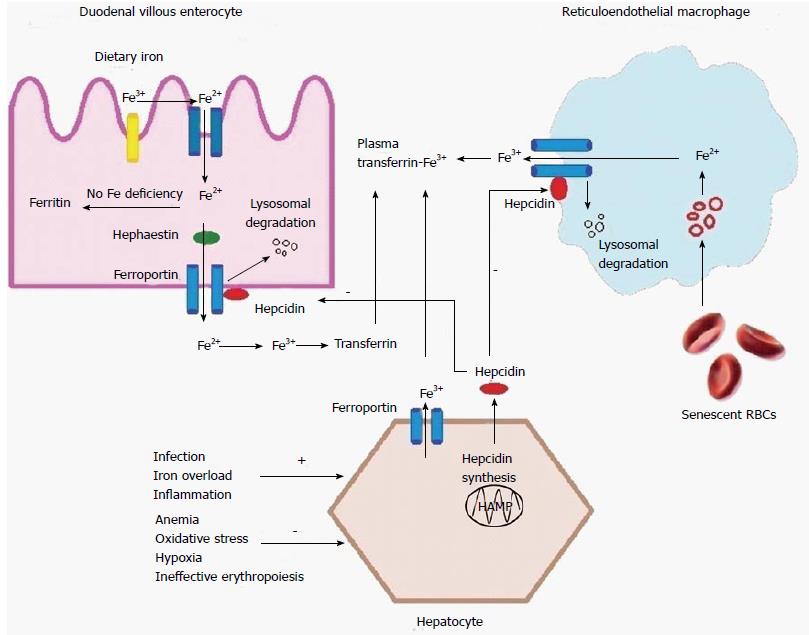Copyright
©The Author(s) 2015.
World J Gastrointest Pathophysiol. Aug 15, 2015; 6(3): 62-72
Published online Aug 15, 2015. doi: 10.4291/wjgp.v6.i3.62
Published online Aug 15, 2015. doi: 10.4291/wjgp.v6.i3.62
Figure 2 Role of hepcidin in the regulation of iron homeostasis.
Fe3+ is reduced to Fe2+ by enterocyte brush border reductase Dcytb, transported across brush border membrane by DMT1. If iron demand is low, Fe2+ is stored as ferritin and sloughed with enterocytes. If iron demand is high, iron is oxidized by oxidase hephaestin and then exported into the plasma at the basolateral membrane by ferroportin[23]. Hepcidin binds to iron exporter, ferroportin 1, leading to its phosphorylation, internalization by binding to JAK 2 and lysosomal degradation, thus preventing iron release into the plasma[16]. DcytB: Duodenal ferric reductase; DMTI: Divalent metal transporter 1.
- Citation: Kaitha S, Bashir M, Ali T. Iron deficiency anemia in inflammatory bowel disease. World J Gastrointest Pathophysiol 2015; 6(3): 62-72
- URL: https://www.wjgnet.com/2150-5330/full/v6/i3/62.htm
- DOI: https://dx.doi.org/10.4291/wjgp.v6.i3.62









